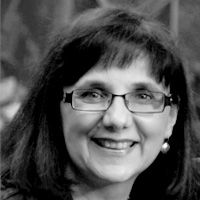Question
I am currently working with a 3 year old with a fluency disorder. What are your personal methods of reporting objective behavioral measures of stuttering for preschoolers?
Answer
For young children (ages 2-6) who stutter, I try to get several different measures. First, I get a disfluency count. This is measured in percentage of stuttered words. I also want to know what types of disfluencies are being observed (e.g. repetitions, prolongations, blocks, revisions, interjections). I note secondary behaviors and give a rating of physical tension observed.
When eliciting a speech sample for a disfluency count, I try to have some of the sample based on the child being in more fluency enhancing conditions (e.g., the clinician using a slower speaking rate, less direct questioning, less time pressure, etc.) Then, I try to have the remainder of the sample (about half) under conditions of more communicative stress (e.g., faster pace, rapid fire questions, more time pressure, interruptions, etc.). this will allow me to see what the child's fluency is like under optimal and stressful conditions.
The Stuttering Severity Instrument-4 (SSI-4) is a good tool to use to quantify the areas described above. In addition, a disfluency count sheet can be obtained at The Stuttering Center of Western Pennsylvania.
This Ask the Expert was taken from the course entitled: Using Stories to Facilitate Speech Fluency in Children presented by Craig Coleman, M.A., CCC-SLP, BRS-FD and Mary Weidner, M.S., CF-SLP.
Visit the SpeechPathology.com eLearning Library to view all of our live, recorded, and text-based courses on a variety of topics.
Craig E. Coleman is a Clinical Coordinator at Children's Hospital of Pittsburgh and Co-Director of the Stuttering Center of Western Pennsylvania. He received his Bachelor's and Master's degrees at the University of Pittsburgh. Craig is a Board-Recognized Specialist in Fluency Disorders. He has served on the Legislative Council of the American Speech-Language-Hearing Association. Craig is also a past president of the Pennsylvania Speech, Language, and Hearing Association.

